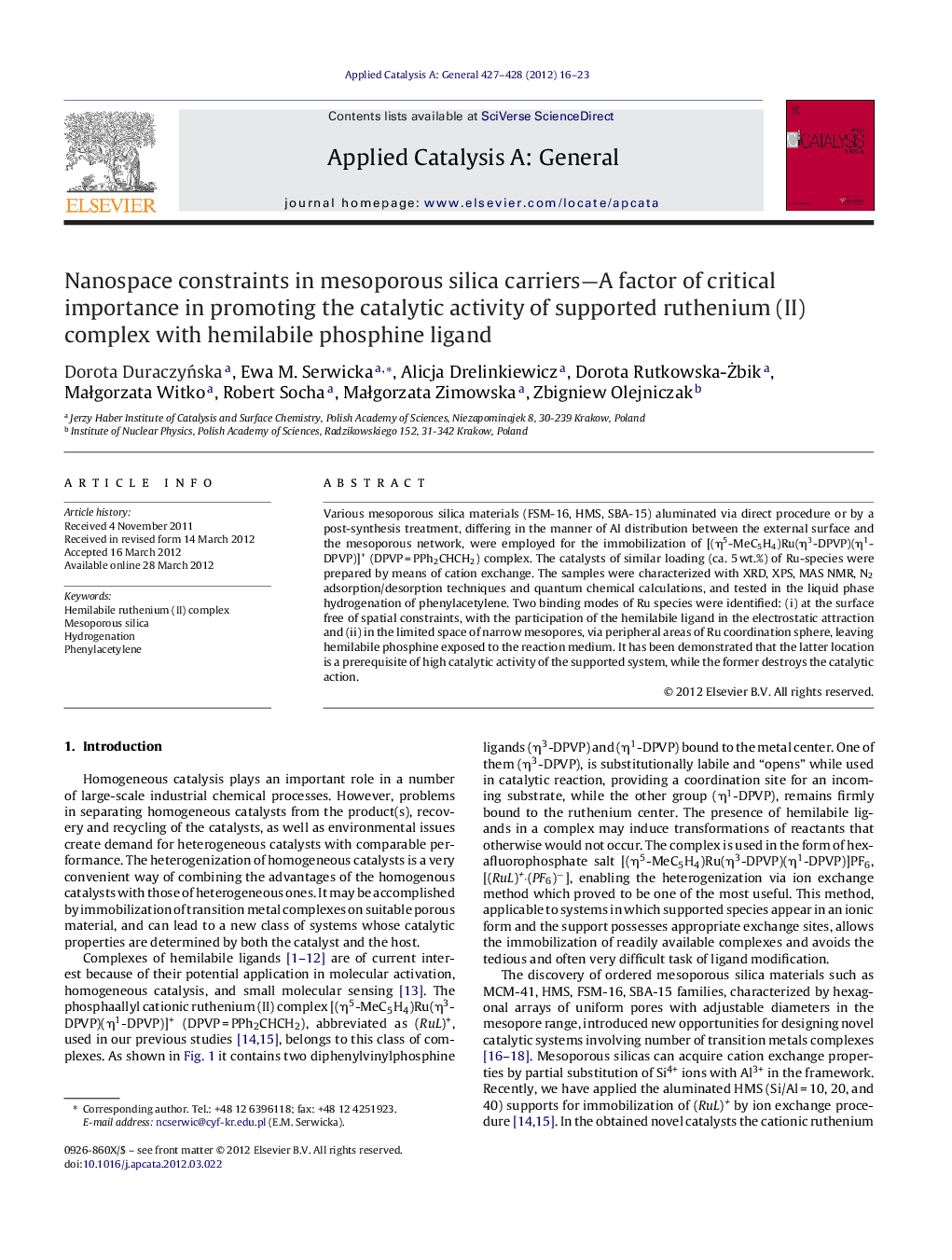| Article ID | Journal | Published Year | Pages | File Type |
|---|---|---|---|---|
| 40950 | Applied Catalysis A: General | 2012 | 8 Pages |
Various mesoporous silica materials (FSM-16, HMS, SBA-15) aluminated via direct procedure or by a post-synthesis treatment, differing in the manner of Al distribution between the external surface and the mesoporous network, were employed for the immobilization of [(η5-MeC5H4)Ru(η3-DPVP)(η1-DPVP)]+ (DPVP = PPh2CHCH2) complex. The catalysts of similar loading (ca. 5 wt.%) of Ru-species were prepared by means of cation exchange. The samples were characterized with XRD, XPS, MAS NMR, N2 adsorption/desorption techniques and quantum chemical calculations, and tested in the liquid phase hydrogenation of phenylacetylene. Two binding modes of Ru species were identified: (i) at the surface free of spatial constraints, with the participation of the hemilabile ligand in the electrostatic attraction and (ii) in the limited space of narrow mesopores, via peripheral areas of Ru coordination sphere, leaving hemilabile phosphine exposed to the reaction medium. It has been demonstrated that the latter location is a prerequisite of high catalytic activity of the supported system, while the former destroys the catalytic action.
Graphical abstractFigure optionsDownload full-size imageDownload high-quality image (134 K)Download as PowerPoint slideHighlights► Hemilabile Ru complex is immobilized on various mesoporous silica materials. ► The binding mode of Ru complex to the support influences catalytic activity. ► Location of Ru complex within the porous network results in high catalytic activity. ► 31P MAS NMR is a diagnostic tool for prediction of the supported catalyst activity.
